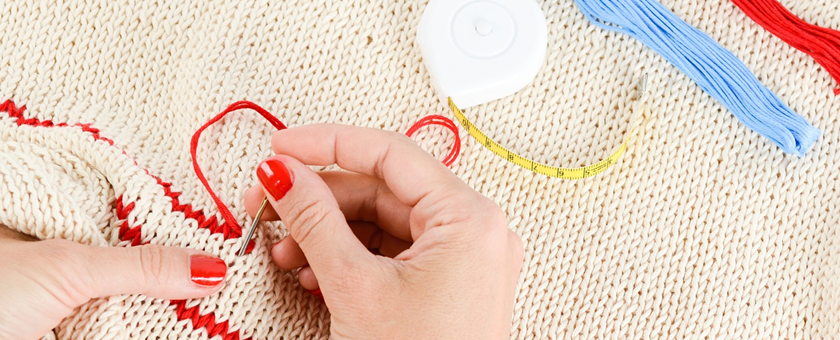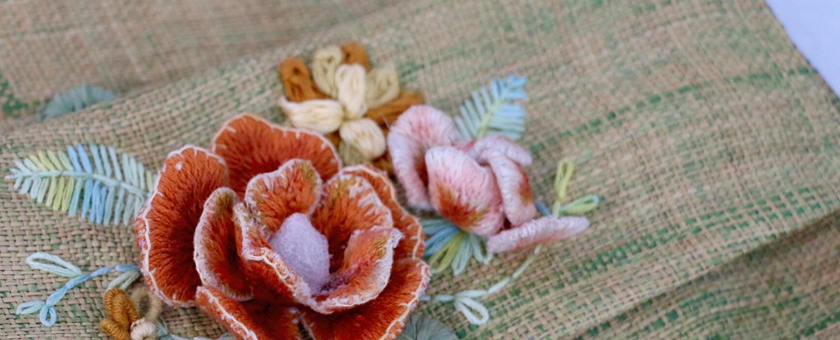info@chinaadventure.org
86-18008011324
Search
Chinese embroidery, also known as silk embroidery and needle embroidery, is one of the outstanding traditional Chinese crafts. China is the first country in the world to discover and use silk. People started raising silkworms and reeling silk four or five thousand years ago.

Basic Introduction
Embroidery, after long-term accumulation and development, have its own specialty and advantage. In China, in addition to the "four famous embroideries " (Suzhou Embroidery, Hunan Embroidery, Guangdong Embroidery and Sichuan Embroidery), there are also have Shangdong Embroidery, and Beijing Embroidery, Hangzhou, Han embroidery, Fujian Embroidery and other Chinese Ethnic Groups embroidery.
Embroidery, also known as "Needle Embroidery", commonly known as "embroidery". It is one of China's outstanding traditional national crafts to draw colored thread (silk, velvet, thread) with embroidery needles, and to prick and transport needles on the fabric (silk, cloth) according to the design pattern, and to form patterns or characters with embroidery threads.

Stitch
There are two main departments of Chinese embroidery:"Chih wen" and "Tuan Chen". "Chih wen" uses long and short needles, while "Tuan Chen" uses seed needles, also known as French knots or Beijing needles.
The most commonly used stitches in China are satin needles (which is classified into long and short), French knot, the stem stitch, the couching stitch, the chain stitch and the split stitch.
Satin stitching is particularly detailed, and the Chinese favorite French knot is made of gold thread. In the past, lighter materials such as tulle and paper were sometimes used for embroidery to show the degree of detail of the work.

China's Four Famous Embroidery
The four famous embroidery was formed in the middle of the 19th Century. Apart from its artistic characteristics, another important reason is the result of the commercialization of embroidery. Because market demand and embroider place of origin are different, embroider handicraft began to form respective place characteristic as a kind of commodity. Among them the product of 4 places of Suzhou, Guangdong, Hunan, Sichuan sells especially wide, reason has "Four famous embroidery in China" say.
Su Xiu (Suzhou Embroidery)
Suzhou Embroidery is one of the oldest embroidery techniques in the world. Suzhou Embroidery was one of the earliest styles of embroidery developed in China, but its elaborate stitching and intricate patterns are still produced today. It is a style characterized by brightly colored silk embroidery with proportionally and neatly represented almost any idyllic scene, person, animal, or object. Examples of Su Embroidery are so detailed and complex that many people takes it as works of art, and some of the oldest works still exist for hundreds of years. There are detailed records of embroidery in Suzhou area around 200 BC, and embroidered silks were used as maps in the Second and Third Centuries AD. But in the Song Dynasty (960-1279), Suzhou style became prominent. Using delicate silk embroidery from the Suzhou region, which can create an image said to be "comparable to nature", it has become very fashionable to use Suzhou embroidery at home. Embroidery spread to other provinces in China, and soon embroidery workers from all over the country were working on Su Embroidery. While other techniques of Chinese embroidery have been around for years, Suzhou style has set the standard for other styles. Su Embroidery is a detailed representation of almost any object embroidered on a fine thread. A prominent feature of Suzhou embroidery is that some pieces are double-sided. The stitching on the Suzhou embroidery is made with silk thread, which is separated until the real silk thread is almost invisible. With repeated stitches, very dense embroidery is produced. Su Embroidery, which dates back nearly 1,000 years, has been used in clothing, wall hangings and even sophisticated book covers.

Xiang Xiu (Hunan Embroidery)
Hunan is one of the four major centers of Chinese embroidery production, and its embroidery tradition dates back to the Spring and Autumn Period (770-453 BC). Embroidery workers use brocade, cicada, nylon, etc. as raw materials. They not only produce valuable artistic works of Xiang embroidery, but also produce daily necessities, such as embroidered pillowcases, embroidered mattress covers, embroidered handkerchiefs, embroidered tablecloths, embroidered clothes and so on.

Yue Xiu (Guangdong Embroidery)
Yue Embroidery was fully developed in the Tang Dynasty. Ancient Chinese artisans used peacock feathers twisted together as embroidery thread to sew decorative patterns, and the horse tail was used to stitch the outline to make the work more expressive. The design of Yue Embroidery is rich and complex with bright colors and strong decorative effect. The embroidery is smooth and even. One of them is gold and silver cushion embroidery, the stereo effect that creates luxuriant. The variety of Yue Embroidery, the most common ones include sunbird, dragon and phoenix. Yue Embroidery includes Light and Chao branches with different styles of stitching.

Shu Xiu (Sichuan Embroidery)
Shu Embroidery, which originated in Shu for short in Sichuan Province, is characterized by elegance and lightness, influenced by geographical conditions and customs. The earliest record of Shu Embroidery was in the western Han Dynasty. At that time, embroidery products were a luxury only enjoyed by the royal family and were strictly controlled by the government. During the Han Dynasty and The Three Kingdoms Period, Shu Embroidery and Shu Brocade were used to exchange horses and pay debts.
In Qing Dynasty, Shu Embroidery entered the market and formed an industry. Workshops and government agencies are fully engaged in promoting the development of the industry. It becomes more elegant and covers a wider area. From the master's painting, to the design, to the landscape, flowers and birds, dragon and phoenix, tiles, ancient coins, it seems that everything can become the theme of embroidery. Folk tales such as the “Eight Immortals Crossing the Sea”, unicorn and other auspicious patterns such as magpies playing on the plum and mandarin ducks on the water are also popular topics. The patterns with strong local characteristics were very popular with foreigners at that time. These include lotus and carp, bamboo forests and pandas.

Minority Embroidery
Ethnic minorities, including Bai, Miao, Zhuang and Tibetan, are also skilled embroiderers, each with its own style.
Tibetans are famous for their wall hangings embroidered with sacred Buddhist symbols. Thangka, usually depicting a god, mandala, or scene within a geometric frame, is usually painted on silk or cotton, but sometimes also embroidered or applique.
Bai people usually use cotton thread to embroider on cotton cloth.
Zhuang hydrangeas are often found in shops and often hung on sticks in the hands of itinerant traders in southern China. It was made of coloured silk, sewn by young girls, and given to prospective suitors. Today it is basically all about the baubles.
There are Miao people in Yunnan, Guizhou and Hunan who embroider stories on their clothes. Using a technique of weaving two needles and multiple threads at the same time. Their auspicious patterns on jackets, bags, blankets and baby straps are bold in color and texture.

we’ll reply you in 24 hours!
Copyright © 2012-2024 All Rights Reserved to chinaadventure.org